Do you drink green tea every day? Read on to learn more about its history, types, benefits, and how to steep the perfect cup of green tea. Enjoy its sweet, earthy flavor and innumerable health benefits (Think Japanese lifespan!)
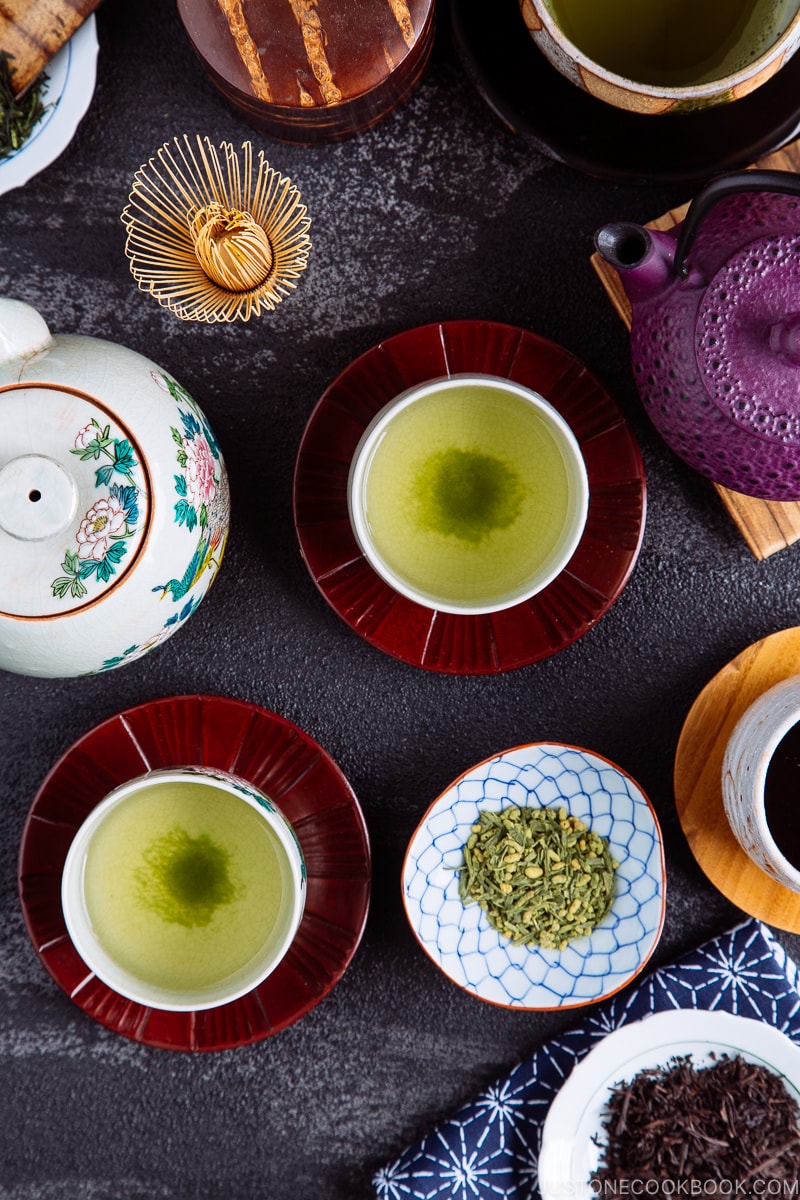
Green tea is synonymous with Japanese tea. It is the most consumed beverage in Japan, valued for its health and restorative properties. Drinking green tea (緑茶) is a custom that has been interwoven into Japanese culture, with almost every meal in Japan accompanied by a freshly brewed pot of green tea. It is a way of life and an embodiment of Japanese hospitality.
Before taking your next sip, let’s discuss the history of green tea, types of green tea, and the best way of drinking green tea for optimal health benefits.

Brief History of Green Tea in Japan
Green tea was first introduced in Japan by Japanese monks who studied Buddhism in China during the Nara and Heian era over a thousand years ago. It was first enjoyed exclusively by the religious classes of Japanese society but spread to the royal and other elite classes as tea cultivation started in Japan.
In the 12th century, a Zen priest named Myouan Eisai, wrote a book called Kissayojoki (喫茶養生記), in which he talked in detail about tea cultivation, green tea preparation, and how beneficial green tea is for health and long life. The success of his book led to the emergence of shared tea culture in Japan, where all levels of Japanese society began to drink green tea and adopted it as a central part of their daily lives.
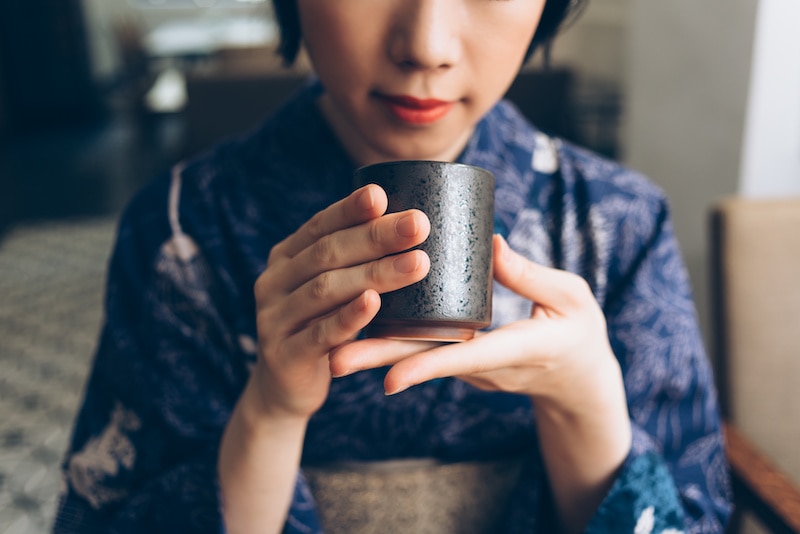
6 Types of Japanese Green Tea
Green tea and other tea like black tea, white tea, or oolong all come from an evergreen shrub called Camellia sinensis. What makes them different are how the tea leaves are cultivated and processed. Green tea retains its fresh color and delicate flavor because it is processed quickly to prevent oxidation—the tea leaves are steamed and dried almost immediately after being harvested.
There are various types of green tea, depending on the cultivation methods, growing conditions, as well as the steaming and drying process. Each type of green tea has its own characteristics and flavor, and here are just some of the classifications of green tea:
1. Sencha
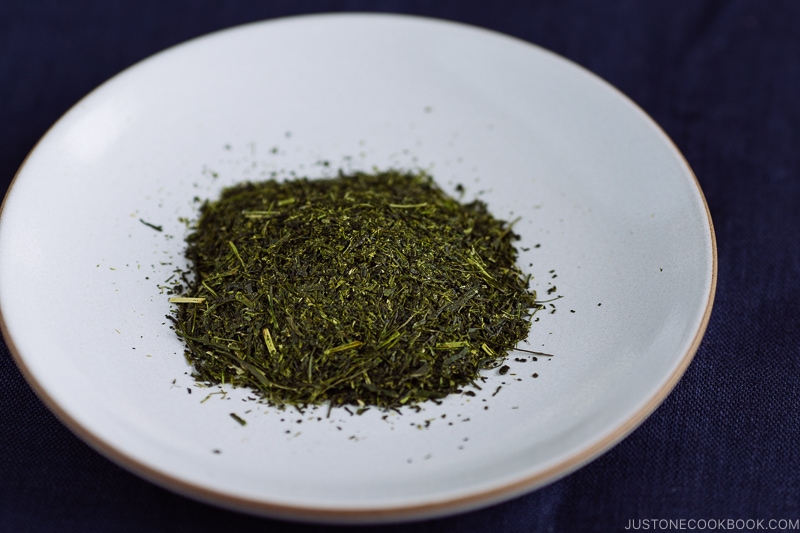
Sencha Fukamushi is the most common green tea consumed in Japan. It is produced by picking only the youngest tea leaves; these sencha leaves are then steamed, rolled, and dried. With a good balance of acidity and sweetness, sencha makes a great everyday tea.
2. Matcha Green Tea
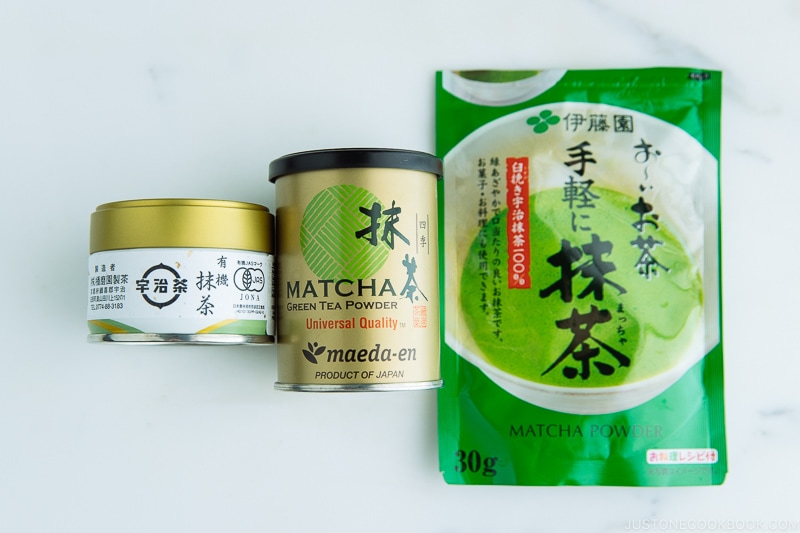
Recognized for its vivid green color, matcha is processed with high-quality tea leaves (known as tencha)—grown in the shade a few weeks before harvesting in order to strengthen the flavor and caffeine level. It is then processed into a very fine powder, which is traditionally used for Japanese tea ceremonies. The powder and water are placed in a bowl, and then whisked with a special type of whisk: a chasen. With a unique earthy flavor and unmistakable color, matcha has now become a sought-after ingredient in inventive modern cuisines and as a trendy flavoring in all sorts of wagashi (Japanese sweets) and western-style pastries.
👉🏼 You can read more about matcha and its uses here.
🍵 Matcha Recipes:
3. Gyokuro
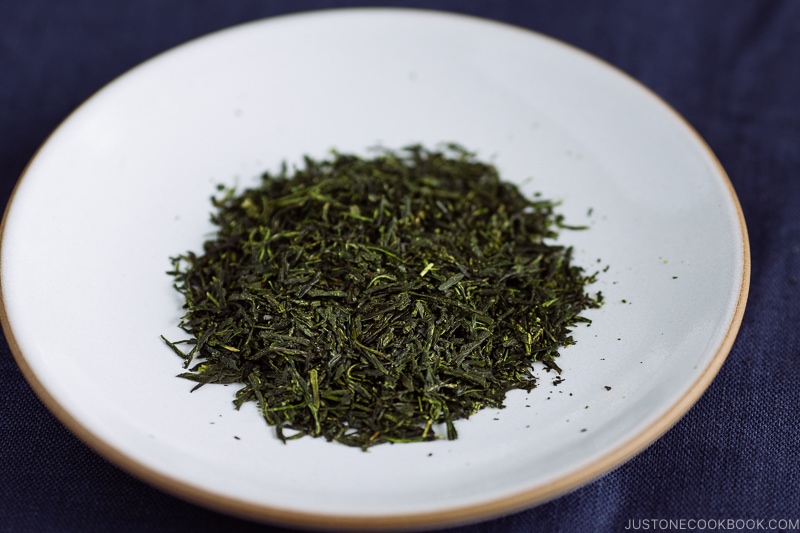
Gyokuro (or Jade Dew) is often viewed as the best quality green tea. Like the tea leaves used for matcha, gyokuro also uses shade-grown tea leaves, giving the tea a much more concentrated flavor. Some describe the taste as sweet and slightly seaweed-like. You can clearly distinguish the tea with its deep, dark green leaves and its unparalleled aroma. For any tea connoisseurs out there, and those who appreciate their tea with rich accents, gyokuro may be your tea of choice.
4. Hojicha
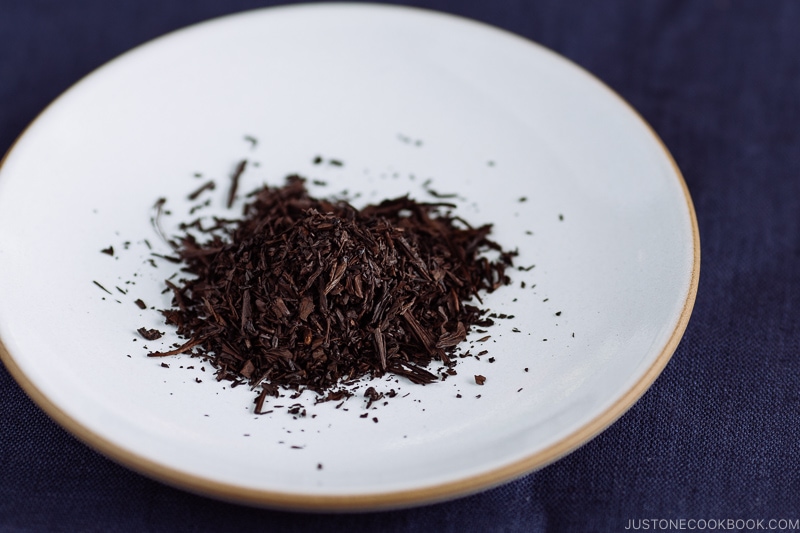
Hojicha is a green tea that has been toasted and chilled. The tea leaves have a reddish-brown color and a roasted aroma. Hojicha is mild tasting and has less caffeine, which makes it a wonderful tea to enjoy especially after a late, heavy dinner.
5. Genmaicha (Genmaicha)
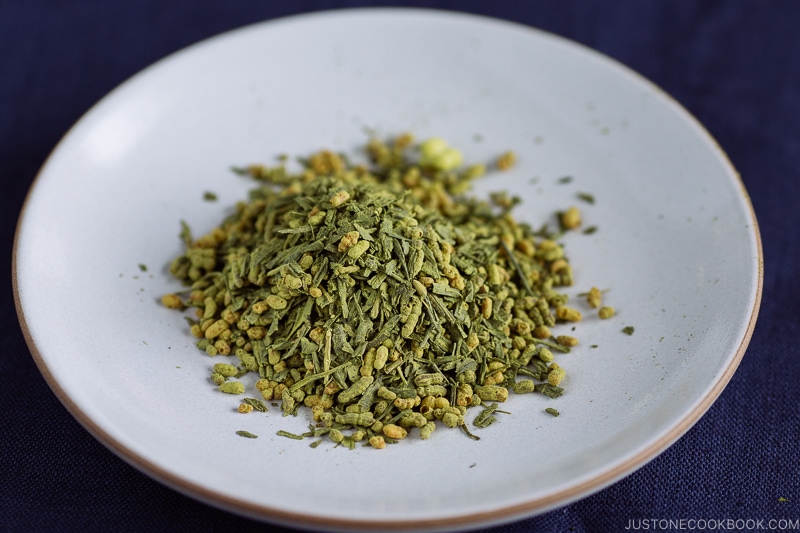
This traditional Japanese green tea is an interesting mix of a Sencha tea blended with toasted puffed brown rice, It gives the tea a distinctively toasted grain undertone. It’s a mild-flavored tea with an almost popcorn-like taste. An excellent choice for those who prefer low caffeine tea.
6. Others
In addition to the above common green teas, you can also some other interesting varieties which include Kukicha (twig tea), Ryokucha (a mix of steamed green tea and ground matcha), Bancha (harvested later in the season than Sencha), and Konacha (tea made from the leftover dust of Gyokuro or Sencha). I highly recommend looking into all the different types of Japanese green tea to find the one that suits your tastes the best.
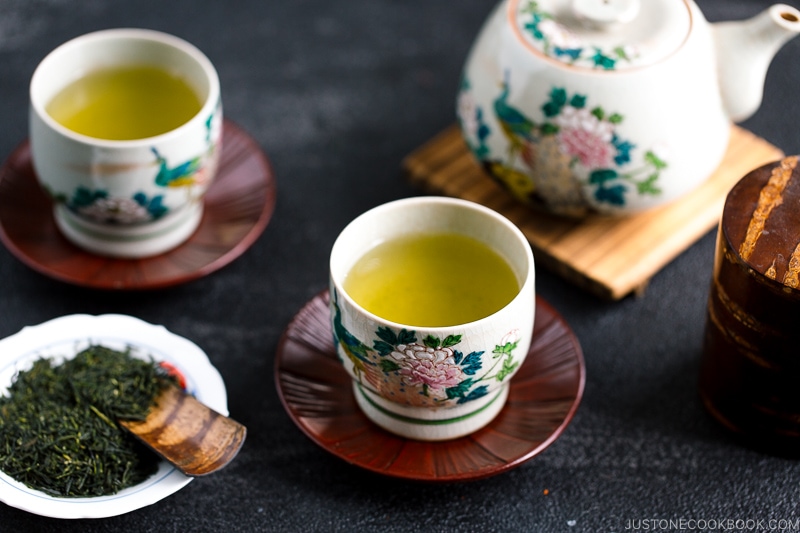
Health Benefits of Green Tea
Numerous research studies have found links between consuming the nutrients in green tea and lowering the risk of high blood pressure, inflammation, heart disease, and cancer.
While these studies are not definitive and there’s still much more to learn about green tea, here are some potential health benefits of green tea that have been brought forward:
1. Green tea contains antioxidants that improve overall health
As it is one of the least processed types of tea, green tea has high levels of antioxidants and bioactive compounds such as polyphenols, catechins, and other types of flavonoids. These beneficial compounds act as the same anti-aging compounds found in red wine, dark chocolate, and blueberries, which can fight free radicals, protecting cells and molecules from damage.
2. Green tea helps protect heart health
Drinking green tea regularly over a long period of time is said to help prevent many risk factors for heart-related diseases. A study published by the Journal of the American College of Nutrition found participants consuming five or more cups of green tea every day were less likely to develop hypertension or cardiovascular disease.
3. Green tea helps promote brain health
The flavonoids found in green tea can have protective effects on neurons, which can help lower the risk of Alzheimer’s disease and Parkinson’s disease. It also contains L-theanine, a unique amino acid that can work synergistically with caffeine to improve brain function.
4. Green tea and relaxation
For those of us who drink green tea daily, we would all agree on its meditative effect. There is something tranquil about sipping a fresh brew of green tea that reminds us to slow down and breathe. A study published in Trends in Food Science & Technology shows that L-theanine in green tea provides a calming and relaxing effect to the brain. With less caffeine than coffee, green tea is a great alternative to increase alertness without getting the caffeine jitters.
5. Green tea may lower your risk of diabetes
The flavonoids and anti-inflammatory properties in green tea are believed to help improve glycemic control and reduce blood sugar levels. Therefore, drinking green tea can be beneficial for those who are at risk or diagnosed with type 2 diabetes.
6. Green tea promotes bone health
A study published by the University of Hong Kong indicates green tea may improve bone health. The scientists report that the 3 major components in green tea – epigallocatechin (EGC), gallocatechin (GC), and gallocatechin gallate (GCG) – can stimulate bone formation and help slow its breakdown. Some laboratory research also indicates green tea could be beneficial in reducing inflammation related to arthritis and slowing cartilage breakdown.
7. Green tea and weight loss
Does green tea burn fat? Will drinking green tea help you lose weight? This is probably the most asked question concerning the benefit of green tea. While we wish for a straightforward answer, the connection between green tea and weight loss is a gray area. Several studies show that green tea can facilitate the burning of fat and help boost the metabolic rate, but not all studies reach the same conclusion. Even if green tea does not help burn fat, you may find that drinking green tea helps in digestion after a heavy meal, especially an unhealthy meal. Research or not, you will find that green tea has a restorative quality to your body and mind.
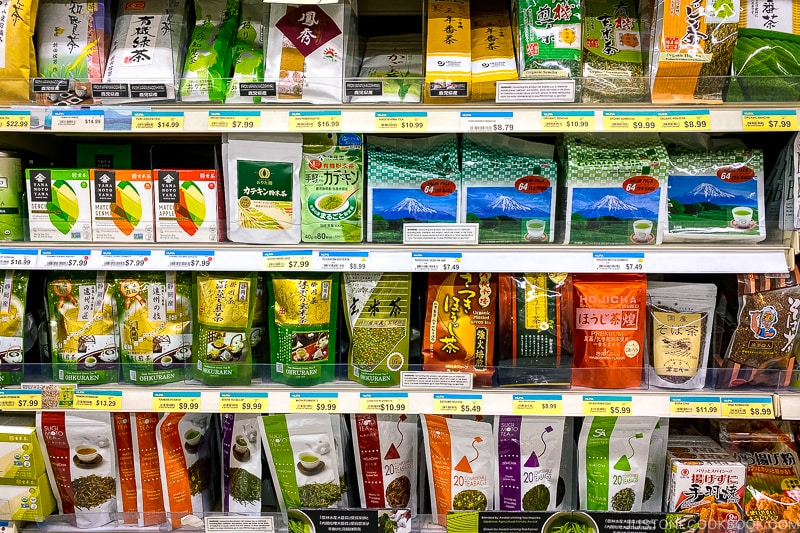
How to Choose the Best Green Tea
When choosing green tea, fresh loose leaf tea is always the best choice. Engage your senses to find the freshest tea leaves with a crisp bright aroma.
A general rule is to buy from a reliable tea producer or supplier that believes in ethical tea farming and has a strong knowledge of green tea cultivation, processing, and preparation.
👉🏼 Here are my favorite green tea shops:
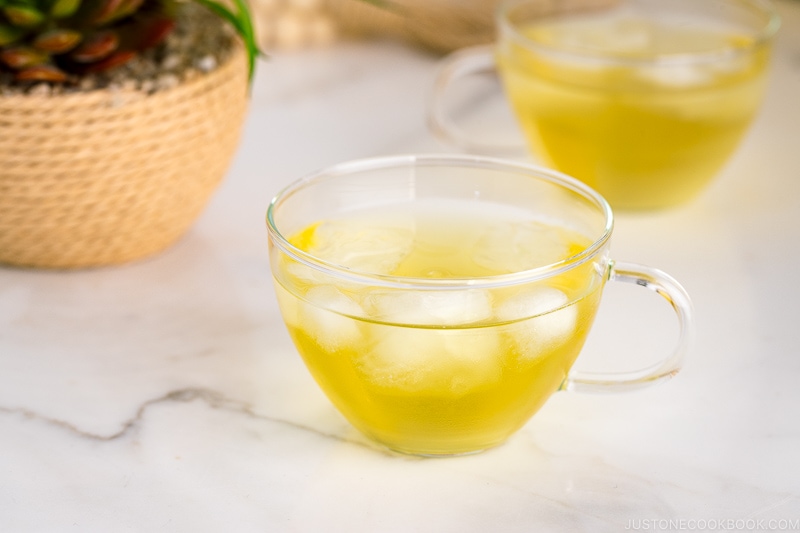
How to Make the Perfect Cup of Green Tea
In modern Western culture, green tea has become heavily associated with the matcha flavor— that is, green tea mochi, green tea ice cream, green tea cookies. However, simply drinking the tea itself remains a staple of Japanese culture.
To enjoy the benefits of green tea, here’s how to make the perfect cup of green tea:
- The ideal temperature for making green tea should be 160-180 ºF (70-82 ºC). The most common mistake many of us make when making a pot of green tea is steeping it with boiling water. Not only does the hot boiling water result in a bitter tasting green tea, it can also destroy the bioactive compounds such as catechins that are beneficial in the tea.
- The steeping time for green tea varies depending on the type and quality of the green tea you use. In general, you can steep for three minutes, then have a taste and let it steep longer if you prefer. After drinking, green tea leaves can be steeped again, usually 2-3 times.
- The Japanese believe that good water yields good rice and the same goes for a good pot of tea. The quality of your water will determine how your green tea tastes. Mountain spring water is ideal for making the best tea, but since that may not be feasible, try a high quality bottled water or at least soft water from the tap.
- Green tea is best on its own without sugar, dairy, or any added ‘natural flavors’.
- To maximize the health benefits, you can also enjoy green tea with citrus such as a squeeze of lemon juice. Vitamin C in the citrus will help your body absorb the catechins (source).
How Many Cups of Green Tea Should I Drink?
Most experts recommend drinking about 3-4 cups of green tea per day to receive the most benefits from green tea. However, if you are just starting to drink green tea, enjoy one cup in the morning after breakfast and one in the afternoon after lunch.
More Healthy Japanese Beverage:
Editor’s Note: This post was originally published on November 20, 2017. The post has been updated with more information and republished in March 2022.

